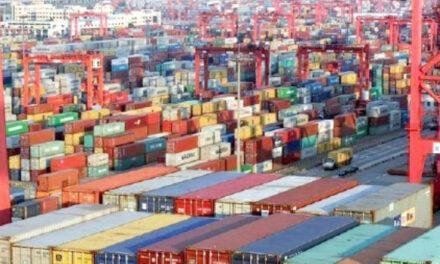 The country’s power sector has lost billions of rupees in revenue as high electricity tariffs have cut the consumption of export-oriented industries by up to 49 percent in some areas, an industry group said on Tuesday.
The country’s power sector has lost billions of rupees in revenue as high electricity tariffs have cut the consumption of export-oriented industries by up to 49 percent in some areas, an industry group said on Tuesday.
The All Pakistan Textile Mills Association (APTMA) said in a letter to the energy minister that the power consumption of textile and apparel firms had declined by 49 percent on the Lahore Electric Supply Company (LESCO) network and 36 percent on the Multan Electric Power Company (MEPCO) network in October 2023, compared to the same month last year.
The consumption has fallen after the government increased the power tariff to 14 cents per unit for export industries – the highest in the region – and made them uncompetitive in the global market, APTMA said.
The power sector revenue from these industrial units was over Rs1.1 billion less on the LESCO network alone in October 2023, the letter said, adding that the actual losses were likely to be much higher.
“This has nullified the argument that any substantial increase in power tariffs will increase the power sector’s revenue collection and reduce capacity payments for all consumers. If the status quo is maintained, industrial production and electricity consumption will continue to decrease, which will further worsen the economic situation.”
The letter suggested to the Energy Minister Mohammad Ali that the only way to avert this crisis is to provide the export sector with power tariffs that exclude cross-subsidies, stranded costs, and other economic inefficiencies.
APTMA argued that following the withdrawal of regionally competitive energy tariffs and power tariff rebasing earlier this year, power tariffs for export-oriented industrial consumers increased from 9 cents per unit to 14 cents per unit, which is almost twice the average prevalent for export sectors in regional economies.
The letter mentioned that high tariffs have caused export firms to be priced out of international markets and lose export orders to competitors with significantly lower power tariffs in regional economies.
APTMA’s analysis suggests that above a threshold of 12.5 cents per unit, export-oriented firms are increasingly forced towards closure and the export sector is crowded out in due course. At the same time, domestic industries also face weak demand as rampant inflation has eroded consumers’ purchasing power and this has in turn lowered manufacturing activities and therefore industrial power consumption across the board.
“Declining consumption of electricity, increasing capacity charges, and decreasing revenue are causing power tariffs to increase continuously, as also evidenced by the Quarterly Tariff Adjustment for the first quarter of ongoing FY24, which will cause consumption to decline even further.”
APTMA also argued that in addition to direct implications on power sector revenue, there are also significant implications for the entire economy. “Exports went down 15 percent in November 2023 compared to the same period last year. If the energy prices remain regionally uncompetitive, any recovery to pre-crisis levels of exports can be ruled out.”
“The country’s economy will continue to face balance of payments and exchange rate pressures, which will further add to debt servicing costs and other fiscal challenges, fuel inflation, and rule out a decrease in interest rates for the foreseeable future and continue to weigh down on industrial and economic growth.”
The letter also pinpointed that as the slowdown in industrial activity worsens, direct and indirect employment in upstream and downstream sectors will be reduced even further, affecting millions of livelihoods.





















